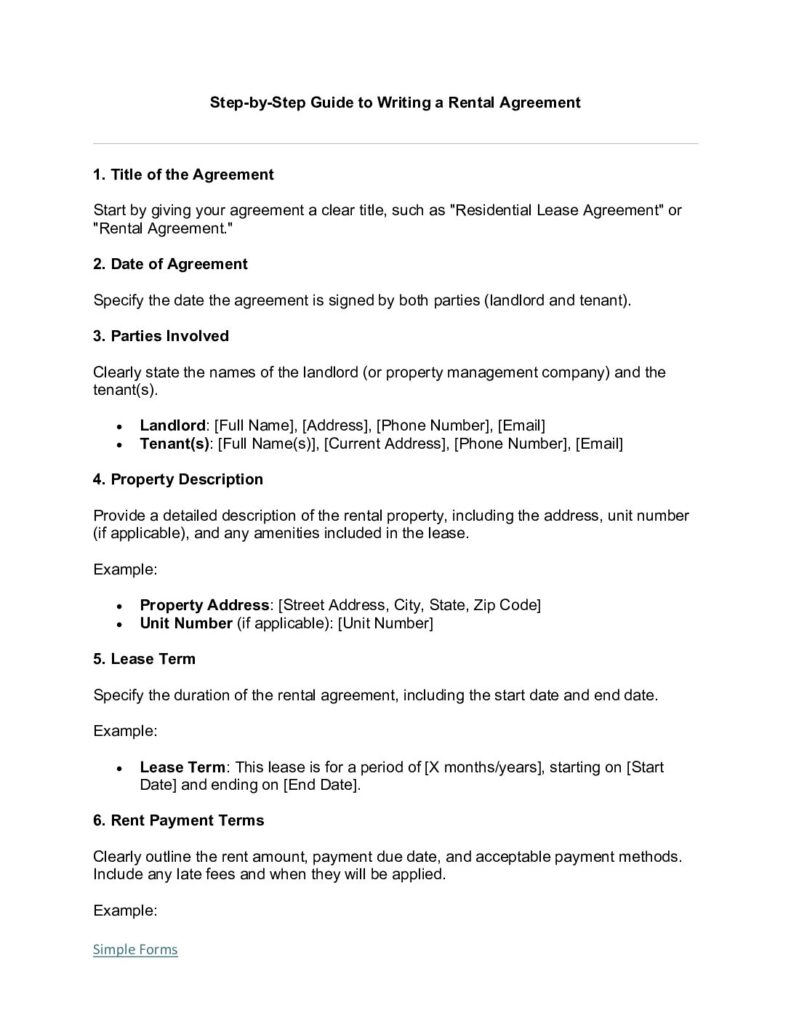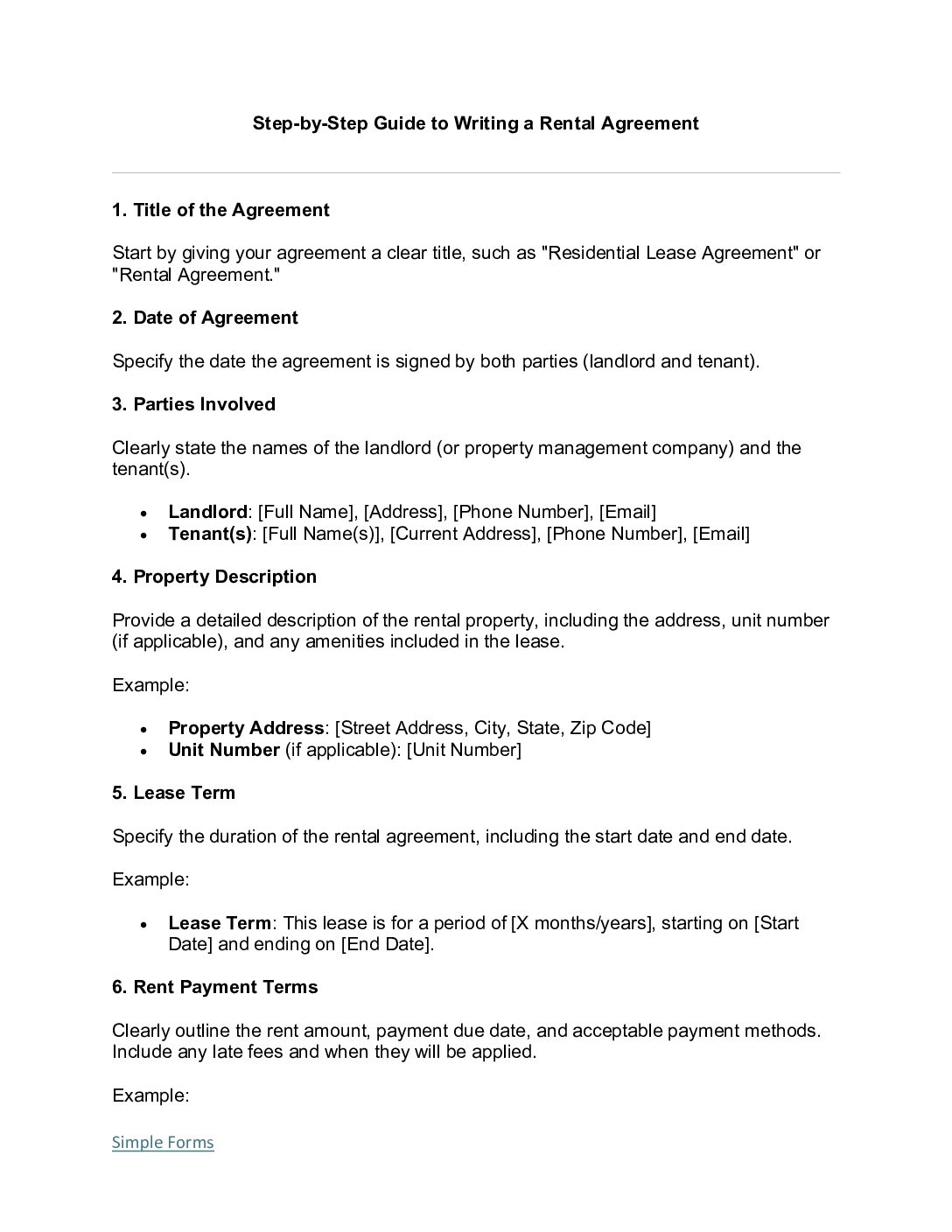How to Create a Rental Lease Agreement
A rental lease agreement is a document for both landlords and tenants that sets rules and expectations of both parties.
Tips for Creating a Legally Binding Rental Lease Agreement Form
-
- Use clear, simple language that’s easy to understand.
- Check local laws to make sure the agreement meets all requirements.
- Consider having a lawyer review the agreement.
Step-by-Step Guide to Writing a Rental Agreement for Landlords and Tenants
Step 1 – Title of the Agreement
Start by giving your agreement a title, such as “Residential Lease Agreement” or
“Rental Agreement.”
Step 6 – Rental Payment Terms, Late Fees, and Payment Methods
Outline the rent amount, payment due date, and acceptable payment methods. Include any late fees.
- Monthly Rent – $[Amount]
- Due Date – Rent is due on the [Xth] day of each month.
- Payment Method – [Bank transfer, check, online portal, etc.]
- Late Fee – A late fee of $[Amount] will be charged if rent is not received within [X] days of the due date.
Step 7 – Security Deposit Requirements and Return Dates
Specify the amount of the security deposit, the conditions under which it will be returned, and any deductions that may be made for damages.
- Security Deposits – Tenants shall pay a security deposit of $[Amount], which will be held to cover any damages or unpaid rent. The deposit will be returned within [X] days after the end of the lease term, minus any deductions for damages or unpaid amounts.
Step 8 – Utilities and Services Included in Lease
List the utilities and services included in the rent (e.g., water, electricity, gas) and specify which ones the tenant is responsible for.
- Included Utilities – [List utilities included, e.g., water, trash removal, etc.]
- Tenant’s Responsibility – Tenant is responsible for paying utilities such as electricity, gas, internet, etc.
Step 9 – Address Responsibilities for Maintenance and Repairs
Outline the responsibilities of both the landlord and the tenant for maintaining the property.
- Landlord’s Responsibilities – The landlord is responsible for maintaining the property services (plumbing, heating) and that they are in good working order.
- Tenant’s Responsibilities – Tenant is responsible for keeping unit clean and notifying the landlord of any necessary repairs.
Step 10 – House Rules and Pet Regulations
Include any rules or guidelines that the tenant must follow, such as pet policies, smoking policies, noise restrictions, and parking rules.
- Pets – No pets are allowed on the property without prior written consent from the landlord.
- Smoking – Smoking is prohibited inside the rental unit and in common areas.
Step 11 – Lease Renewal Terms and Early Termination Rules
Specify the terms for renewing the lease or terminating the agreement.
- Lease Renewal – The tenant may request to renew the lease at least [X] days before the lease expiration.
- Termination – Either party may terminate this lease by providing [X] days written notice prior to the lease end date.
Sample Guide on Writing a Rental Lease Agreement Form
https://simpleforms.com/wp-content/uploads/2024/12/Step-by-Step-Guide-to-Writing-a-Rental-Agreement-1.pdf


